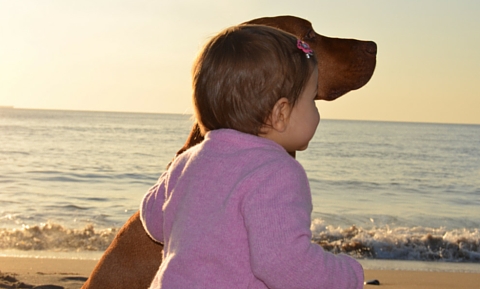
This week is National Dog Bite Prevention Week! It is a week focused on providing education around preventing dog bites. With millions of dogs in the world, there are a staggering number of people who get bitten every year. The majority of them are children, who are also far more likely to be severely injured by a dog bite. As many as 1 in 5 dog bites require professional medical care. Most of these bites, if not all, are preventable with a little extra attention and education on this matter. Any dog has the ability to bite, and biting can be seen as a normal canine response to perceived threats or threatening situations.
Some tips for dog owners on preventing dog bites with your pets:
Train your dog. Invest the time to properly train your dog. Seek expert help and enroll yourself and your dog in a training course if you are unsure about how to effectively train your dog. Ensure that you are confident that your dog will listen and heed your commands in any situation that may arise.
Socialize your dog. Spend time when your dog is a puppy making sure they are comfortable around a wide variety of people and animals, and understand how they are to behave in social situations. Provide your puppy with positive interactions with children of all ages, which will help them cultivate a positive attitude towards children and be more aware of how children behave.
Learn to read your dog’s body language. As an owner, you should be able to tell when your dog feels stressed or threatened by the way their hold their bodies, ears, and tail, and through their vocalization. If your dog is feeling stressed or is showing unwanted responses, you should calmly remove them from the situation right away.
Provide sufficient mental and physical stimulation. Doing so will let your dog release pent up energy and frustration in a healthy way, so that they will have more patience and be less likely to get overexcited, even when playing.
Keep your dog healthy. Make sure vaccinations are up to date and be aware that how your dog is feeling can directly affect how it behaves- if it is in pain from an injury or illness, they are more likely to be impatient, lash out and bite.
Carefully manage and supervise when your dog interacts with small children. Small children can be unpredictable, and dogs do not often understand that they are easily harmed, even while playing. Always keep a close eye on your dog when interacting with children, and never leave your dog along with them.
Keep control of your dog. In public places and around other people and dogs, always use a leash and collar. The use of a head-halter can be helpful for maintain control of an especially unruly or exuberant dog. Muzzle dogs if they have shown aggression in the past.
Some tips to keep you and your family safe around dogs:
Teach children the proper way to act around dogs. Carefully explain that they shouldn’t yell, squeal or startle a dog, and they should never run, chase or play roughly around a dog. Teach them not to pull a dog’s tail or ears, and to never interrupt them while eating or take their toys away. Show them how to approach a new dog slowly and carefully, to let the dog sniff their hand before they pet them, and to pet with their hand open on the dog’s back and sides. Teach them to recognize the signs a dog may make if they are stressed, such as growls, snarls, or freezing, and to not pursue a dog that is moving away from them.
Other general tips for safety around dogs:
- Do not touch a dog you do not know without asking the owner’s permission
- If you see a dog behind a fence, leave it alone. Never try to pet a dog through or over a fence.
- Even if a dog is wagging its tail, it might not be friendly.
- Do not leave young children alone with a dog. There should be an adult nearby.
- If you see dogs fighting, do not get between them or try to stop them.
- If you see a hurt dog do not touch it. Get help.
- Do not touch a mother dog or her puppies.
- Let a dog sleep. Never wake up a sleeping dog by poking, pushing or hitting it.
- Let a dog eat its food. Don’t pet, poke or pull a dog when it is eating.
- If you fall or are knocked to the ground by a dog, curl into a ball. Cover your face and neck with your hands.
The AVMA has created a coloring book for children based around educating children on how to behave around dogs, with an aim to preventing dog bites. You can download it here: https://ebusiness.avma.org/files/productdownloads/dog_bite_prevention_coloring_book.pdf
Dog bites can be prevented. All it takes is educating yourself and your family on the proper ways to behave around dogs.
Do your part to prevent dog bites! Check out Doggone Safe for resources on preventing dog bites for children and adults.
